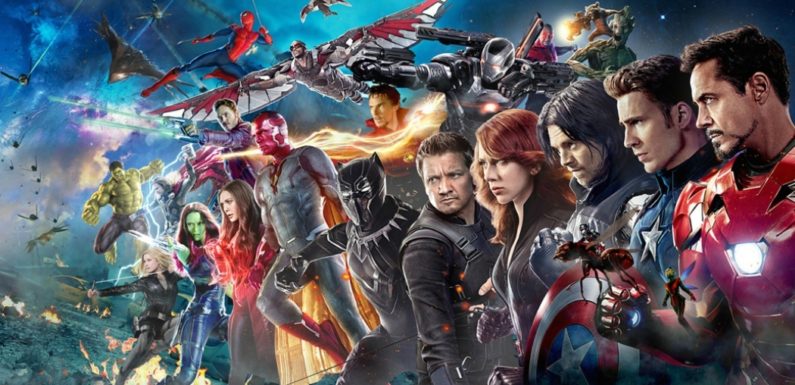
Everyone is asking the question: how could the Avengers defeat Thanos? Quora users offer a lot of theories. One involves taunting Thanos to use the stones one at a time. While another one suggests, Doctor Strange should offer Thanos a bargain, just like what he did to Dormammu.
I think Doctor Strange hasn’t maximized the power of the Eye of Agamotto. I kept on asking, why hasn’t he tried to see the possibilities the first time Hulk crashed landed his staircase? They could have defeated him earlier since Thanos only has two stones at that time (i.e. Space and Power).
Come to think of it, the Time Stone’s power to predict the future is just like artificial intelligence. If the Avengers would use AI frameworks and AI infrastructure to aid in their quest to beat Thanos, what are techs that they should use?
Here’s a comprehensive list. The Avenger’s guide to artificial intelligence.
AI Frameworks
Apache PredictionIO is an open source AI framework to build, evaluate and deploy engines with machine learning algorithms. It has a noble vision: “to democratize and bring machine learning to the masses.” It has two major components, the PredictionIO framework, and the Event Server. The framework uses Apache spark to process machine learning algorithms. While the event server unifies events from various platforms using Apache HBase or any JDBC backends as its data store.
NET has C# at its backbone. It is a .NET framework with audio and image processing libraries that enable enterprise-grade computer vision, audition, signal processing, and statistics. It can cater to various types of classification, regression, clustering machine learning algorithms. And, a couple of statistical algorithms such as distributions, hypothesis tests, and Kernel Methods.
Source: Accord.NET
The sample application shows how to use Gaussian Mixture Models. It is meant to perform clustering and classification using soft-decision margins. Download the application and source code here.
BigML is one of the leading startups in data science. It has a web interface that guides from data upload down to model creation- both predictive and descriptive. Its command line interface utilizes Python API allowing for greater flexibility. For instance, it enables model prediction both locally and remotely. And perform cross-validation tasks to estimate model accuracy. Its RESTful API can also be used directly via curl commands or wrapper.
WorkFusion is one of the leading enterprise-grade robotic process automation (RPA) platforms with a strong machine learning backbone. Its flagship product, called the RPA Express is a free solution that can automate a variety of complex knowledge work, particularly in banks, insurance, retail, and e-commerce.
As a free product, WorkFusion RPA Express is set to revolutionize the RPA industry. Alex Lyashok, WorkFusion COO said:
Making RPA free helps shared services and lines of business within companies support immediate transformation goals and get quick wins by automating enterprise applications. RPA Express lets customers freely automate the manual work of integrating Citrix, Oracle, SAP and other vital core systems by eliminating the “swivel chair” work of entering credentials, navigating application UIs, and performing core systems functions.
Fit for a global market, WorkFusion RPA Express can digitize complex business processes such as BPM, RPA, workforce orchestration and even machine learning-powered cognitive automation.
Download the free RPA Express here.
Caffe is another open source AI framework developed at the University of California, Berkeley. Stemming mostly from the academic domain, it has a wide global network of contributors. Caffe specializes in deep learning feature extraction, classification and the scientific use of neural networks (NNS).
AI Infrastructure
Google Tensor Processing Unit (TPU) is an AI infrastructure made of machine-learning supercomputers or Cloud TPU pods that are fused through high-speed data connections. It is the supercomputer behind Google Search, Street View, Google Photos and Google Translate.
Source: Google Tensor Processing Unit
The TPU includes the following computational resources:
- Matrix Multiplier Unit (MXU): 65,536 8-bit multiply-and-add units for matrix operations
- Unified Buffer (UB): 24MB of SRAM that works as registers
- Activation Unit (AU): Hardwired activation functions
BrainChip uses a technology called spiking neural network; the company claims its tech learns like a human brain. BrainChip tech can provide a high performance yet low overhead neuromorphic computing approach that is very different from other deep neural networks. Its machines can learn instantaneously based on experience, just like a human.
Cerebras is a hardware startup that focuses on the next-generation chip for deep-learning applications. It is a stealth-mode startup that is backed by premier venture capitalists and industry leading technologists. Its goal ultimately is to create a next-generation GPU that is used to apply machine learning on a colossal scale.
There are a lot of open-source and free AI frameworks. Infrastructures are also starting to advance, building supercomputers that are fit for ma achine and deep learning. Through AI, labor costs can be drastically reduced; while generating new and unexpected insights, discover new patterns, and create predictive models from raw data.
Beyond the Avengers
Beyond the Avengers, a Gartner study found three most often-cited AI applications. They are all related to customer interactions.
- One in three organizations will use AI to customer engagement applications;
- Three out of 10 use AI to call center service and support; and
- One in four will use AI into digital marketing.
Beyond all the AI frameworks and AI infrastructure, it is essential to bear in mind that an AI-driven customer engagement scenario requires taking a humanistic design approach. Doing this will enable leaders to maximize value from their diverse, enormous and complex data sets.




